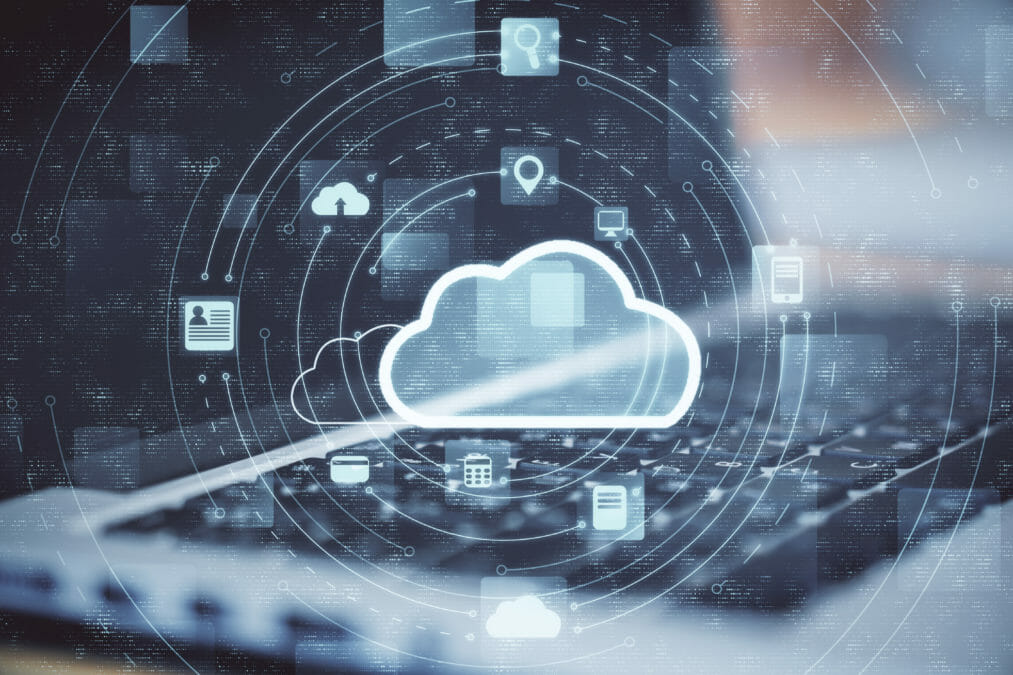Advanced functionality and increased capacity have become synonymous with cloud computing. Everything from enterprise IT to mainstream consumer tech has become reliant on cloud infrastructure to operate optimally. Looking ahead, it is even playing an integral role in supporting emerging technical concepts like AI, augmented and virtual reality, the Internet of Things and quantum computing and has essentially become the backbone of the digital revolution over the past decade. It would come as no surprise then that cloud computing would be essential to the remote working phenomena — we just weren’t expecting things to evolve so widely and quite so quickly.
The 2020 Coronavirus outbreak caused an explosion in the use of cloud-based platforms, which has helped people work collaboratively, shop online, and has kept them entertained for countless hours. Organisations that had been using cloud-based infrastructure weathered the storm far more easily, reinforcing company culture and energising staff from afar. Those that were ill-equipped, however, struggled to onboard the right tools for the job and the sudden changing trajectory proved a disruptive upheaval. It has been an evolution that none of us could have predicted, but millions across the world have been supported as a result of cloud computing.
How the CTO can drive the enterprise’s shift to the cloud
The cloud has been a saviour both personally and professionally for so many during periods of uncertainty, but lockdowns presented challenges to cloud data centres. With access to critical information now even more essential, along with a surge in video streaming, video conferencing, gaming, online education and e-commerce, internet usage is increasing by 50% in some parts of the world. Add to that the growing usage of IoT solutions, the closer combination of Information Technology and Operational Technology, and the integration of Industrial Control Systems in the IT stack, as well as future 5G campus solutions for low-latency applications, mean that we are witnessing an accelerating need for edge solutions to bridge the cloud computing gaps.
Reply’s recent ‘Cloud to Edge’ report has provided insights around the future of cloud computing, and how technology will continue to evolve to meet the particular needs of businesses and individuals.
What is on the horizon?
By 2025, cloud computing will lead the ICT infrastructure market, and edge computing will become an exponentially growing market, according to the report. Germany will be the biggest European market for both cloud and edge computing, while the USA will be the dominant market worldwide.
There are many reasons for this, but ultimately, edge computing can support companies with tasks that can’t be undertaken in the cloud. There are some obvious benefits when dealing with low latency, connectivity, security or privacy and transmitted data volume issues, and neither businesses nor individuals are keen to deal with the consequences of interrupted services. Distributed cloud and edge architectures will increase the speed of data processing, reduce time lag, and enable technologies and sustains the exponential growth of IoT and Autonomous Things such as mobile robots or self-driving vehicles in our new, somewhat distanced, connected world.
Hybrid models like Edge Cloud will be pushed by the hyperscalers, and the 5G wide rollout will provide Telcos and their service partners with a relevant role in the new ecosystem, especially thanks to mobile-edge computing which is able to ensure very low latency without local infrastructure, with compute units that are not on-premise but extremely close from to a cell tower.
Key industries like healthcare, manufacturing, retail, transport, government and energy are all in the process of being digitised and connected. In this data-driven environment, organisations interested in operational efficiencies have the most to gain by moving their functionality to the edge. For example, in the energy sector, adopting edge computing and an industrial IoT solution allows companies to optimise the performance of large photovoltaic systems – great for the grid and the planet.
The opportunities for edge computing to positively impact operations and services are plentiful. Consequently, it is currently at the forefront of IT decision making and fast becoming a growing market.
It’s not about cloud vs edge, it’s about connections
Rapid adoption and growth
Cloud technologies are key to being able to react and restart activities, hence its significant impact in agile and scalable environments. This isn’t just conjecture though; these sentiments are being reflected in the market landscape that we are witnessing today. By 2021, the Infrastructure as a Service (IaaS)/Platform as a Service (PaaS) market will grow – in all scenarios – between 50% and 55% (vs. 2019) across Europe (Italy, Germany, France, Netherlands, Belgium), USA, United Kingdom, Brazil, China and India).
The Software as a Service (SaaS) market is also set to grow rapidly in every country analysed. In particular, by 2025 it is predicted to double in the USA, UK and Europe, while likely to quadruple in India and China.
Both the public and private hosted cloud and OT infrastructure & edge markets are forecast to grow up to 60% in the USA. The whole cluster is forecast to reach almost 183 billion Euro for the public/private hosted cloud market, and 19 billion Euro for the whole OT infrastructure & edge market.
This is what might be termed exponential growth and is a clear indication that edge computing won’t only be present, but intrinsic to innovation over the long term. Cloud transformation and the evolution of IT infrastructure is necessary, and done right, it can enable innovative business models, new products and services, which over the long term ultimately impacts the transformation of an entire economy. Building on the best of edge and cloud computing is the sweet spot and will play a vital role in reshaping the IT architectures that support innovation across global industries for years to come.








